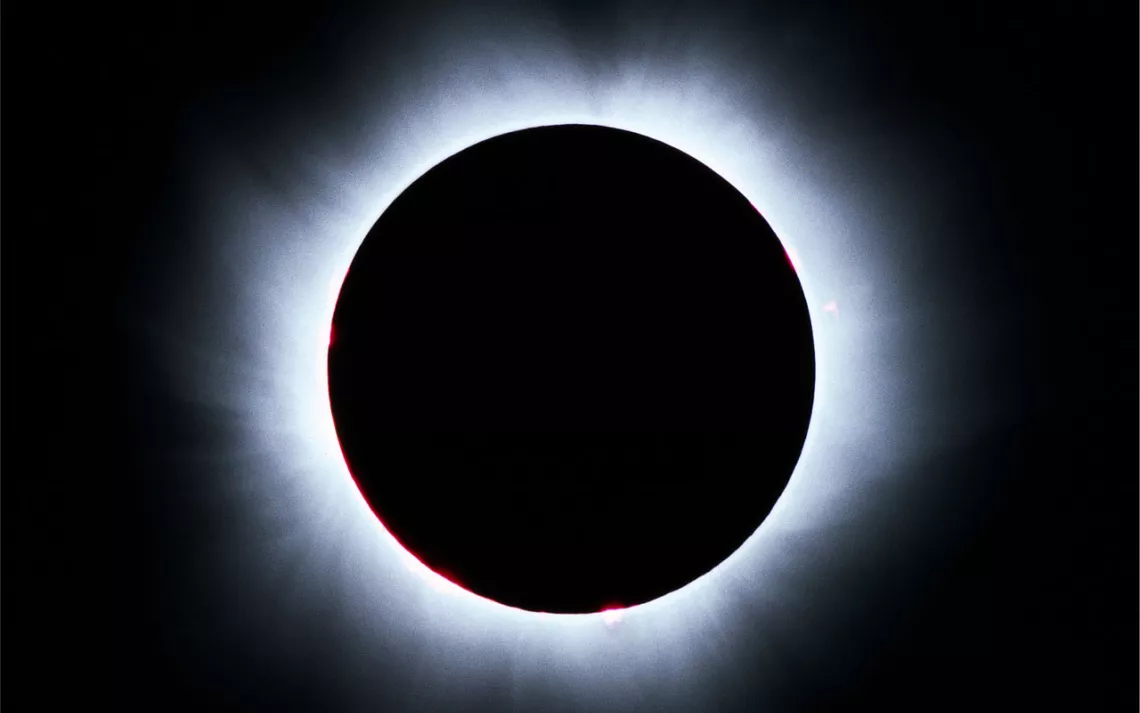March Observing Highlight
A total solar eclipse arrives at the North Pole in March.

A total solar eclipse arrives at the North Pole in March. | Photo courtesy of ESO
By March, you’ve likely seen Venus in the west after sunset, even if you haven’t been specifically looking. Venus is bright and not far from the horizon, masquerading as an airplane for many. But other less flashy planets are also in the vicinity.
On March 10, Venus will still be the bright beacon in the west, and Mars and Uranus will be below it. Use binoculars to zero in on Mars; Uranus will be a half degree to the upper left. On March 11, Uranus and Mars will be even closer together but Uranus will have moved to the lower left of Mars.
The moon is an attraction this month beyond its usual appearances. On March 20, it will pass in front of the sun for certain locations on Earth, creating a solar eclipse. The partial begins at 7:41 UT and reaches totality at 9:10. The total eclipse ends at 10:21 UT and the partial phase at 11:50. Just hours later at 22:45 UT, Earth reaches the equinox and heralds spring. (Or March 20, 3:45 p.m. PDT, for those of us in North America.)
Unfortunately, few people will get to see this total eclipse. The partial phase will sweep over all of Europe and the northwestern parts of Africa and Asia. Greenland and Iceland will also get to see the partial eclipse. But the actual track of totality is mostly over the Atlantic Ocean, passing between Iceland and Great Britain, and touching land only at the islands of Svalbard, Norway, before ending at the North Pole. The United States will miss out on all phases of the eclipse.
After the eclipse on March 21, the new moon will enter the evening sky and be visible just after sunset. On that night, the crescent moon will lie just to the left of Mars. By the next night it will sit beside Venus and its crescent shape will be a bit wider.
 The Magazine of The Sierra Club
The Magazine of The Sierra Club







